how to Assemble + Finish Quilt-as-You-Go blocks
There are many clever tutorials on how to assemble and finish quilt-as-you-go blocks. This is not one of them. This is the simple, no-fuss approach to quilt-as-you-go that may have less finesse, but is super quick and so very user-friendly.
I like to recommend the quilt-as-you-go approach to new quilt makers, who often want to make a quilt for a queen or king sized bed. Large bed quilts are so much less challenging to complete on your standard sewing machine if made quilt-as-you-go. This is the finishing technique that matches that concept. Let's make it easy, secure and pretty. Not clever. It's also the finishing technique I prefer, even as a more experienced maker.
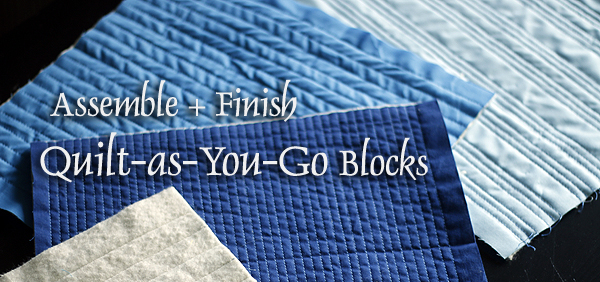
Step 1: Quilt Blocks
You can transform any quilt block into quilt-as-you-go by simply quilting the finished block to a matching square of batting. Do not attach backing at this time. Simply quilt to one layer of batting - that's it!
An individual quilt block is easy to navigate underneath your standard sewing machine. You can experiment with dense quilting patterns that may be otherwise intimidating. In my demo quilt, I've even used a variety of straight-line patterns on my 13" quilt blocks to add more textures to the finished quilt.
Trim all of your quilt blocks to a consistent size after quilting.
Step 2: Join Blocks
This is the "duh" part. Simply join your blocks with right sides together, creating seam allowances that consist of both quilt top and batting. Remember, no backing is involved yet.
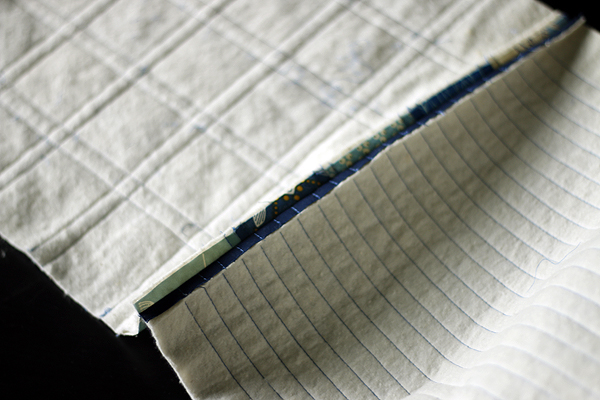
"What? There's batting in my seam allowances!?!?!" you protest. Why, yes, there is. No worries. Just press those seam allowances open to evenly distribute the slight bulk. And it is slight, I promise! I've had a bed quilt finished this way on my master bed for years. Never during use do I notice the extra bulk at seam allowances. Once on a bed and hidden between quilt top/back layers, only a very keen observer would discover the bulk at all. Sure, you will know it's there, but does it matter? I guess the answer is up to you. My answer is "Nope!"
I suggest you join blocks with a wider-than-normal seam allowance. I use 3/8". This wider allowance is easier to keep straight and accurate when dealing with thicker seams. Also, sometimes your blocks will shrink slightly and unevenly in the quilting process. I trim quilted blocks to the original, intended block size (13" in my case) even if that means that a bit of the block edge is only batting with the raw edge of the quilt block say 1/8" from the trimmed edge of the block. A 3/8" seam allowance ensures that I still have a full 1/4" of quilt top fabric in those seam allowances.
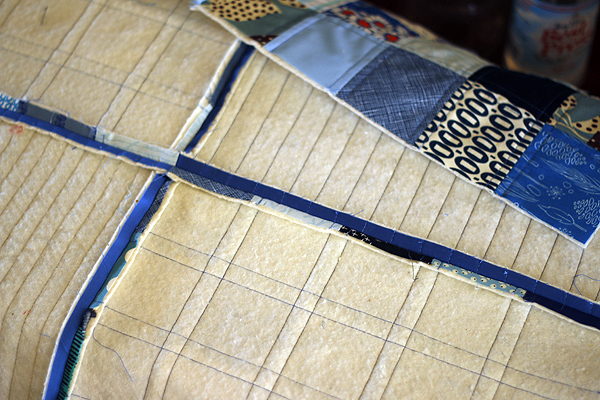
And, guess what? A wider seam allowance, plus batting in your seam allowances add up to a more durable quilt!
Step 3: Baste to Backing
Once you've joined all blocks, you have an already-quilted quilt top with batting attached, but no backing. Make or purchase a backing as usual. Tape it to your floor with wrong side up. Then, lay your quilted quilt top on the backing, right side up.
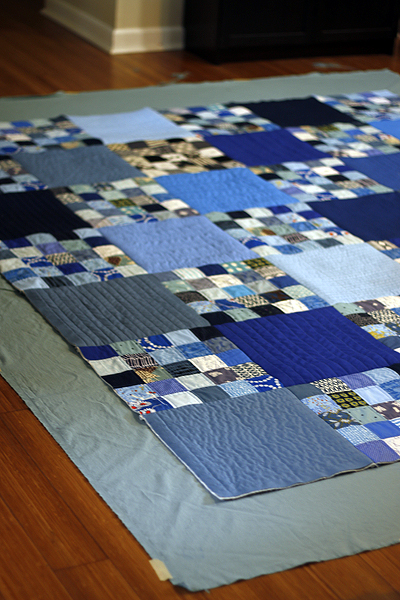
Baste the two layers together with basting spray or pins. I usually use basting spray for my quilts, but with quilt-as-you-go, pins may be better. The quilted top is heavy and doesn't seem to spray baste as securely as a typical quilt sandwich. If using pins, only pin along the block seams, as you will only be quilting or tying along the block seams (not within the already-quilted blocks).
Step 4: Quilt or Tie
The entire goal of this step is to securely attach the quilted top to your backing. It doesn't take much! Just quilt along the seams that joined the blocks to each other OR consider tying the quilt for a machine-free finish.
On a typical quilt (not quilt-as-you-go) the goal of quilting is to reinforce the patchwork, evenly attach batting to the patchwork and attach the three layers. When you quilted your blocks, you already reinforced the patchwork and evenly attached the batting to prevent shifting or bunching over years of use. As I said, the only goal of this step is to attach that backing.
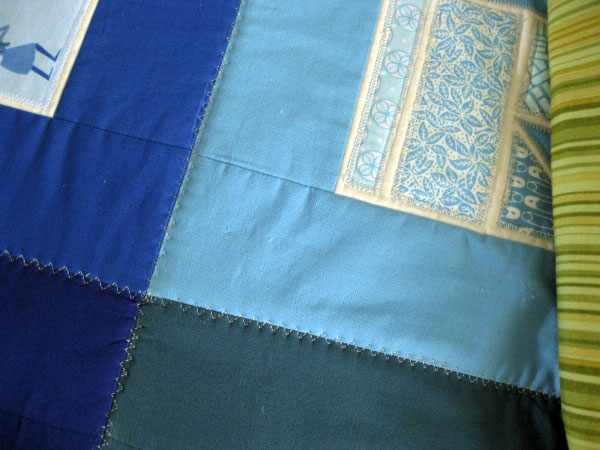
On my Bottled Rainbows quilt I machine sewed a zigzag stitch over block seams to attach the quilted top to the back. A zigzag stitch is very forgiving (hard to make it look crooked!) and it will flatten the slight bulk of the pressed open batting seams, practically removing all trace of the batting-in-seams approach.
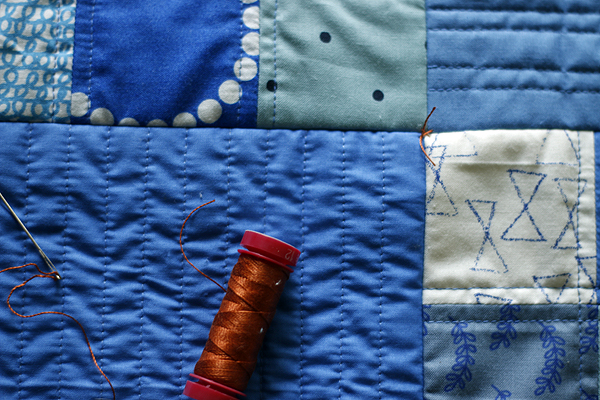
For my current project, I've opted to tie to attach the backing. I'm tying at each corner of each block with rusty orange thread for a fun contrast. When tying be sure to use a heavy duty, durable thread. Consider a triple square knot for a secure tie.
Step 5: Bind to Finish
After attaching the backing to your quilt, either with minimal machine quilting or tying, trim the excess backing around the edges and bind to finish your work! You can opt for any binding method you prefer. If you're looking for another easy, user-friendly approach, consider my Zigzag Binding tutorial below.
Helpful Links:
{Tutorial} Quilt-as-You-Go Log Cabins
(Tutorial} Zigzag Quilt Binding
{Quilt Along} Bottled Rainbows, a quilt-as-you-go scrap quilt
Let me know if you have any questions about this process!
